I’ve been burning the candle at both ends lately and, this week, found myself a bit under the weather dealing with a stuffy head-congestion-body ache-fatigue “thing.”
I’ve made an effort to slow my roll and focus on self care as much as possible the last few days — fuzzy socks, mugs of hot chicken broth and lots of time curled up under a blanket reading and napping. I’ve found congestion relief in the form of hot showers, a portable cool mist nebulizer and…
nasya oil.
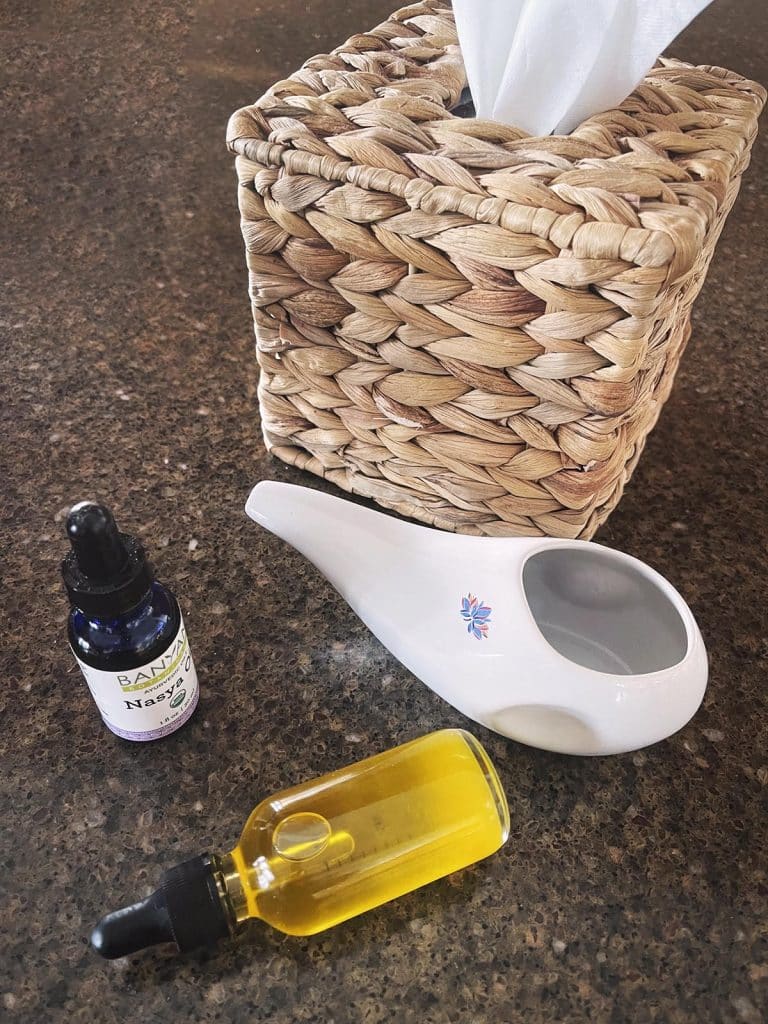
Nasya
We live in a pretty toxic world and we need all the help we can get to deal with it.
The mucous membranes of the nasal passage is one of our first lines of defense against invaders such as pollutants and viruses. Each nostril is lined with membranes covered in tiny hairs called cilia, which beat rhythmically to keep the nasal passage clean. When the membranes dry out, the cilia don’t work as they should and toxins are able to get through.
The Ayurvedic practice of nasya (pronounced nah-si-ya) is the therapeutic ritual of oiling the nostrils and administering herbal therapies via the nasal cavity. The oil nourishes and cleanses the tissues, helping them to remain moist, healthy and balanced. The oil also acts as a protective physical barrier against allergens and environmental pollutants, reducing inflammation and preventing mucus from reforming.
According to Ayurveda, the nasal passage is the gateway to the brain and memory. Nasya clears the nasal passages, enabling the smooth flow of oxygen and prana — the vital life energy that is said to be carried on the breath. Proper concentration, perception, thoughts and emotions are dependent on a healthy flow of prana.
Sleep is, quite literally, the most important daily detox activity we do, and chronic lack of sleep will affect your health in a hurry. One of the ways nasya improves sleep is by making it easier to breathe. If you can’t breathe easily, you also won’t sleep well. Everything is connected.
The importance of deep breathing spans modalities. Advocates such as Dr. Jack Feldman, James Nestor and Wim Hof are well known for promoting breathwork exercises and teaching how important deep breathing is to our overall health. Over time, habitual shallow breathing will lead to a prana deficiency, leaving your brain and body starved for oxygen.
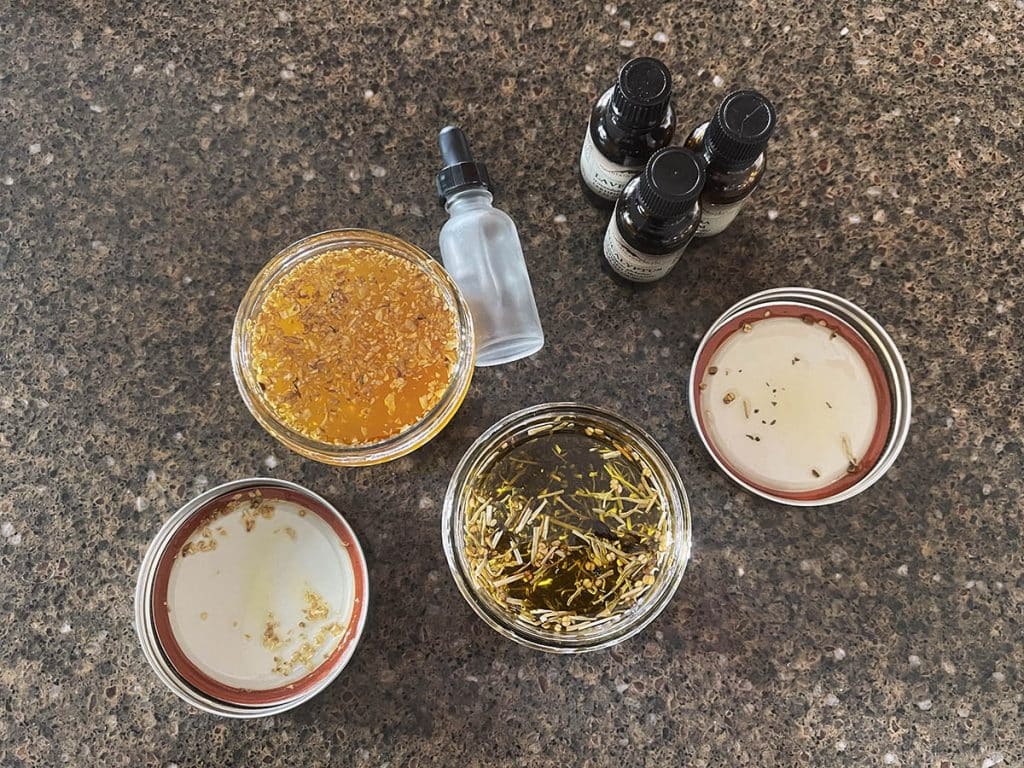
Nasya can be especially supportive this time of year, during the transition of the seasons when we are extra vulnerable to stress and illness. Nasya oil is a life saver when dealing with cold-weather dryness, stuffy nasal congestion and too much nose-blowing that leaves you looking like Rudolph’s twin sister.
If you already practice nasal irrigation, nasya oil is a wonderful companion to your trusty neti pot. As effective as it is, repetitive nasal irrigation and saline nasal sprays can be very drying and nasya soothes and restores the moisture balance to those delicate nasal mucous membranes.
It’s recommended to wait an hour or so after nasal irrigation, steaming or bathing to use nasya oil so you don’t trap moisture that may breed unwanted bacteria in your nose and sinuses.
It’s not just about dry sinuses and congestion though. Nasya is generally indicated for any dis-ease of the head. It’s said to be cleansing and nourishing on a mental, emotional and physical level and is useful in cases of headache (especially due to dryness), stress, anxiety, mental exhaustion, inability to concentrate, insomnia, tension in the shoulders, neck or jaw, vertigo, tinnitus and even snoring and sleep apnea.
According to Dr. Dixa Bhavsar Savaliya, nasya — and particularly nasya that incorporates ghee — is the best ayurvedic therapy for “above the shoulders” disorders related to head, mouth, teeth, ears, nose and eyes.
“Putting two drops of cow’s ghee in your nostrils either in the morning or night helps you have sound sleep, relieves headache (due to stress, migraine, etc.), improves your immunity, reduces allergies, improves memory, improves mental health (gives you more clarity), helps with hairfall and grey hair, relieves tension, improves your concentration and helps with overall health as it nourishes your brain (which takes care of all nervine functions).”
Creating a home nasya ritual
Nasya oil is a staple in my medicine cabinet, and while it’s always brought out during cold and allergy seasons, I don’t do it often enough. I’ve recently recommitted to oiling my nostrils (combined with oil pulling) daily as part of my morning self-care routine.
If you were to visit an Ayurvedic practitioner for a nasya treatment, you would likely receive a lovely facial massage followed by an herbal steam to help loosen the toxins so they can be more easily removed by the treatment. You would then lay on a table with your head tilted back as the practitioner administered oil drops into your nostrils, followed by more massage and a gargle with warm saline water. You might end the procedure by inhaling medicated smoke of turmeric.
Practicing nasya at home is a bit more straightforward.
Nasya oil is best used luke-warm but not hot. When you’re making your morning cup of tea or coffee, make an extra mug of hot water and warm your bottle of nasya in it for a minute or so.
The most effective way to administer nasya is to lie back on a bed or couch with your head comfortably off the edge in a back-tilted position. Use a dropper to insert 3-4 drops of oil into each nostril. Place a finger over one nostril and inhale deeply through the other to draw the oils upward into the nasal passages. Repeat this in each nostril twice. Continue lying on your back for a few minutes to allow the oil time to penetrate. Use this time to quiet your mind and meditate if you’re so inclined.
It is not recommended to nasya while sick, since the inhaled oil could potentially spread bad things to the upper respiratory tract. But since nasal passages are apt to be dry and irritated during a cold you can use pratimarsha nasya, a modified method of applying the oil where just it needs to go.
Simply place a couple of drops of oil on a clean pinky finger and insert it into the nostril. Gently massage to coat the walls of the nasal passage, going only as deep as is comfortable. Repeat with the other nostril. Don’t forget to wash your hands afterwards.
Either treatment should be followed by a gentle massage of the nasolabial folds and surrounding cheek area, and a warm salt water rinse. Pratimarsha nasya is a gentle treatment suitable for daily use, but also can be used symptomatically two to three times a day, as needed.
Note that nasya is contraindicated during pregnancy or for those who have undergone nasal surgery. It shouldn’t be used in cases of chronic inflammation of the sinuses or sinusitis. It’s also not recommended for children under 7 or the elderly over 80.
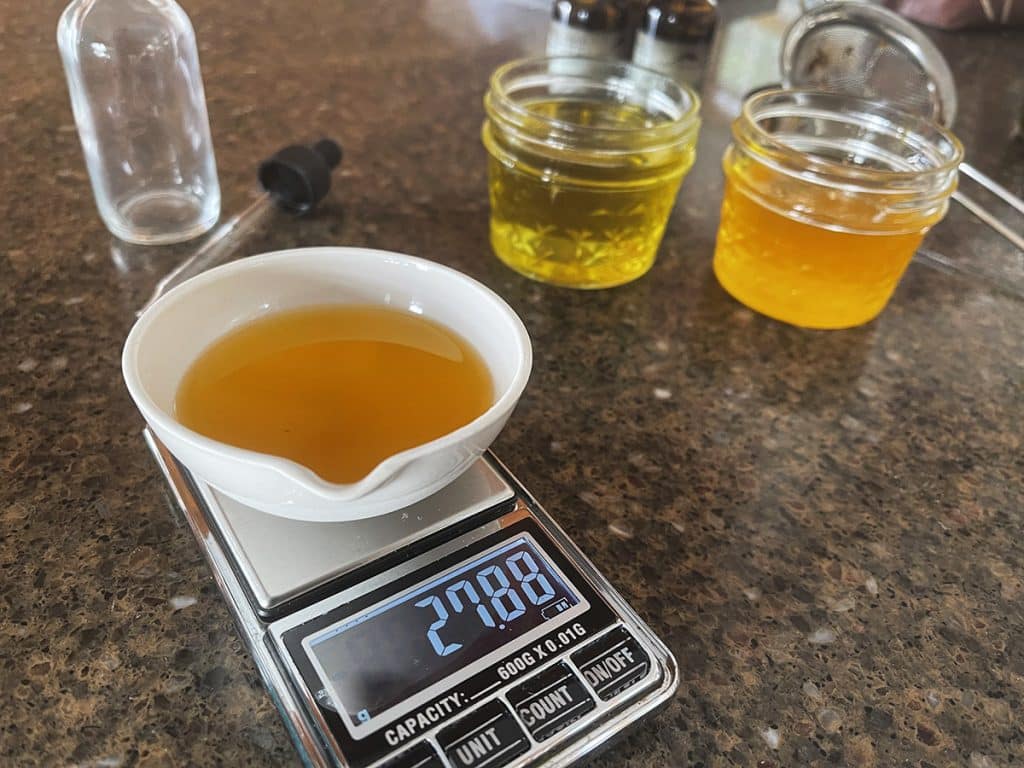
Creating your own nasya oil
Plain oil is useful for keeping nasal passages moisturized and protected, but adding herbs such as gotu kola and ginger to the mix can take the therapy to another level.
I’m a longtime fan of Banyan Botanical’s nasya oil. But like so many other personal care products, when I realized I could formulate my own custom nasya oil for pennies, there was no going back.
(I’ve said it before and I’ll say it again, learning to infuse oils with herbs is a gateway drug. Formulating your own personal care products can become a full-blown addiction. Please send help.)
I like that my nasya incorporates ghee. According to Ayurvedic theory, ghee is particularly adept at carrying herbs deep into the tissues. In fact, ghee (called brahmi ghrita) is the only medicated oil capable of reaching all seven layers of the skin, allowing herbs to be absorbed into the deeper tissues. Ghee is also particularly nourishing to the nerves and the mind.
Both the ghee and sesame oil infusions were done using the alcohol intermediary method, taking care to use only the bare minimum of 190-proof alcohol to barely moisten the herbs. They infused in the oils uncovered in the dehydrator for two days at 115F. I wanted to be certain that every trace of the alcohol had evaporated before I let it get anywhere near a sensitive mucus membrane.
To make doubly sure that there were no plant particles left in the infused oils, I also used an empty disposable tea bag to strain the oils one last time as I added them to my bottle:
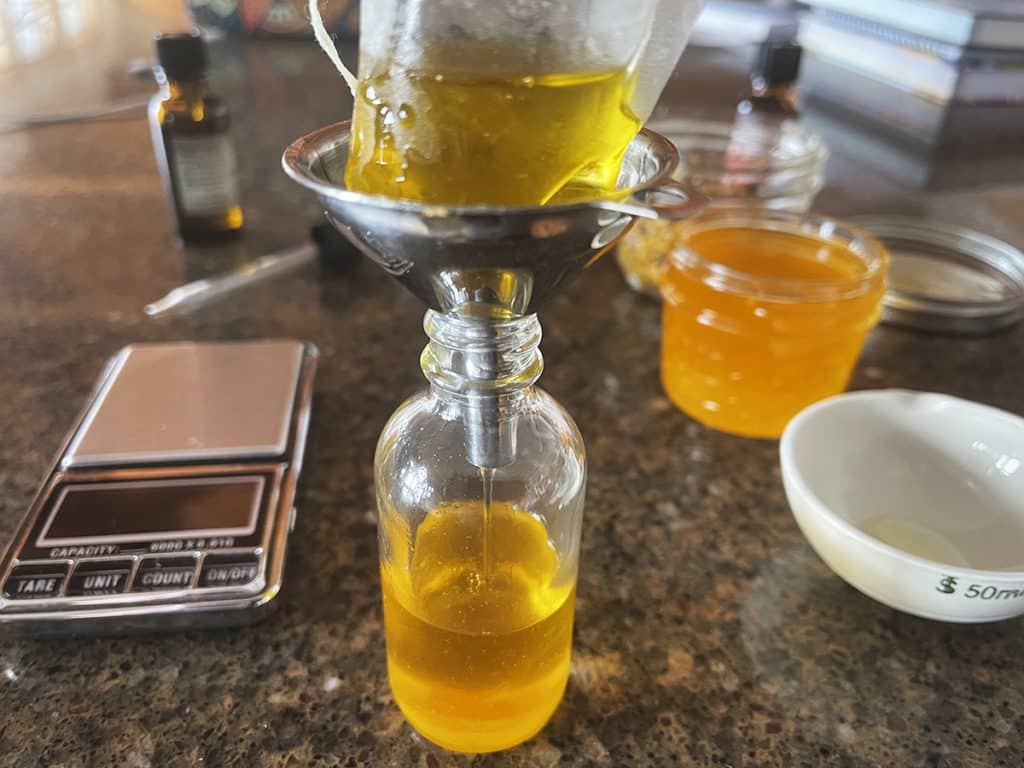
Sesame oil is traditional in Ayurveda for its warming and calming effects on the nervous system. While olive oil shares many these qualities, you’re not likely to find it in Ayurvedic texts because olive trees are not native to India and weren’t grown there until 2007. For the purpose of this recipe, you can use either one. Look for plain organic oils. Don’t use flavored or “toasted” oils.
Your nasya oil can be as simple or complex as you want it to be. Some simply use plain sesame oil, but then, you’d be missing out on a whole world of potential herbal allies!
I chose to infuse my ghee with gotu kola (aka brahmi). Centella asiatica is a nootropic that boosts brain function (always a welcome perk!), calms the mind and reduces stress and anxiety:
I infused my sesame oil with ginger (Zingiber officinale) because it’s an effective herbal antihistamine, anti-viral and immunity booster.
Eucalyptus (Eucalyptus globulus) is a lovely, stimulating herb that clears nasal and sinus congestion and encourages mental clarity.
Finally, lavender (Lavandula spp.) is a nervine herb that is famous for helping the body deal with stress and anxiety.
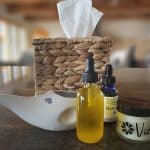
Homemade Nasya Oil
5 Stars 4 Stars 3 Stars 2 Stars 1 Star
5 from 1 review
Ingredients
35 g organic sesame or olive oil, infused with ginger root
25 g plain organic ghee, infused with gotu kola (aerial parts)
15 drops eucalyptus essential oil
7 drops lavender essential oil
Instructions
- Warm infused ghee over a gentle heat source until melted.
- Using a scale that displays up to two decimal places, weigh the infused oils into a glass jar or borosilicate lab beaker.
- Mix well and transfer to a glass 2-oz dropper bottle.
- Place the (sealed) dropper bottle into a mug of hot water for about 60 seconds to warm before using. ♥
Notes
I recommend glass containers for storing homemade lotions and potions. Glass doesn’t leach chemicals and it’s easier to clean/sterilize after the product is used up and you’re ready to refill.
If you do choose to use a plastic container, be aware that essential oils tend to react with plastic, so even if you can get it “clean,” your container will likely not be reusable.
Nasya is contraindicated during pregnancy or for those who have undergone nasal surgery. It shouldn’t be used in cases of chronic inflammation of the sinuses or sinusitis. It’s also not recommended for children under 7 or the elderly over 80.

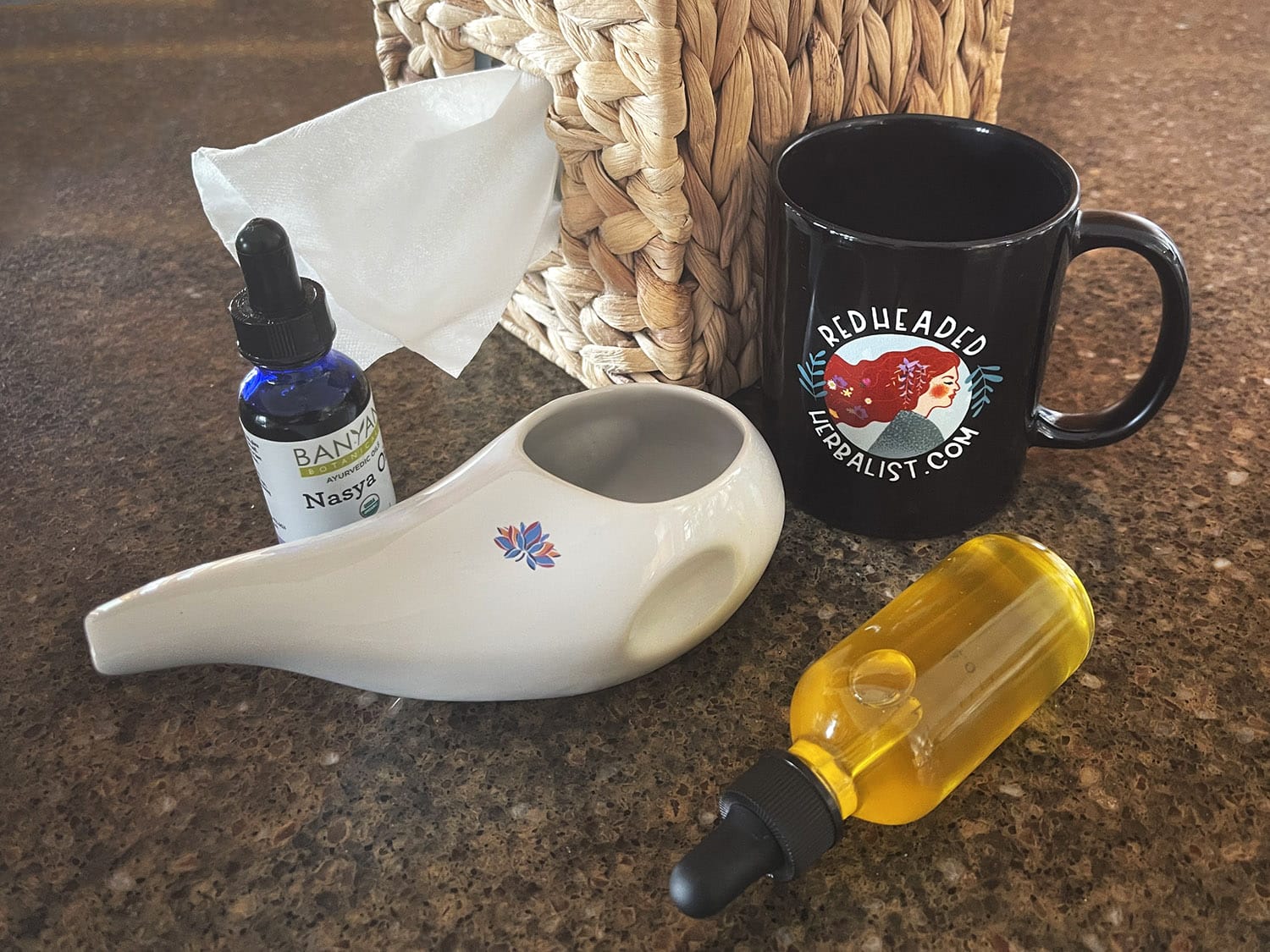


3 Responses
Great article, thank you! Filled in some of my nasya info and personal experience gaps, which is what I was looking for today. When was this posted?
Hi LB, thank you for the kind words! This article was published in October 2022.
Thanks!